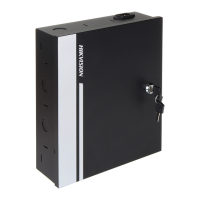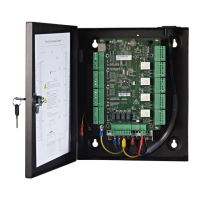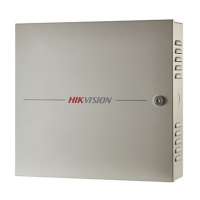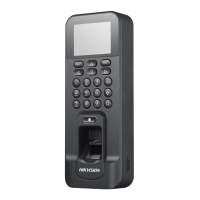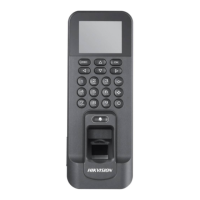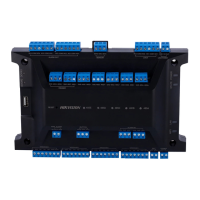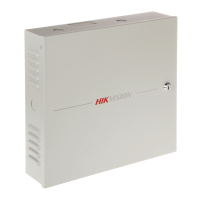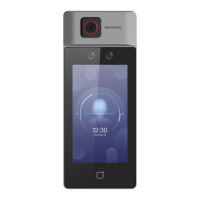Fingerprint Access Control Terminal·User Manual
155
Appendix F Custom Wiegand Rule
Descriptions
Take Wiegand 44 as an example, the setting values in the Custom Wiegand tab are as follows:
Transformation Rule (Decimal
Digit)
byFormatRule[4]=[1][4][0][0]
Manufacturer Code Start Bit
Wiegand Data = Valid Data + Parity Data
Total Length: Wiegand data length.
Transportation Rule: 4 bytes. Display the combination types of valid data. The example displays
the combination of Card ID and Manufacturer Code. The valid data can be single rule, or
combination of multiple rules.
Parity Mode: Valid parity for wiegand data. You can select either odd parity or even parity.
Odd Parity Start Bit, and Length: If you select Odd Parity, these items are available. If the odd
parity start bit is 1, and the length is 12, then the system will start odd parity calculation from bit 1.
It will calculate 12 bits. The result will be in bit 0. (Bit 0 is the first bit.)
Even Parity Start Bit, and Length: If you select Even Parity, these items are available. If the even
parity start bit is 12, and the length is 12, then the system will start even parity calculation from bit
12. It will calculate 12 bits. The result will be in the last bit.
XOR Parity Start Bit, Length per Group, and Total Length: If you select XOR Parity, these items are
available. Depending on the table displayed above, the start bit is 0, the length per group is 4, and
the total length is 40. It means that the system will calculate from bit 0, calculate every 4 bit, and
calculate 40 bits in total (10 groups in total). The result will be in the last 4 bits. (The result length is
the same as the length per group.)
Card ID Start Bit, Length, and Decimal Digit: If you use the transformation rule, these items are
available. Depending on the table displayed above, the card ID start bit is 0, the length is 32, and
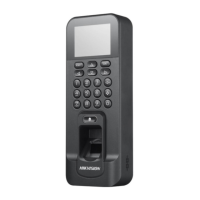
